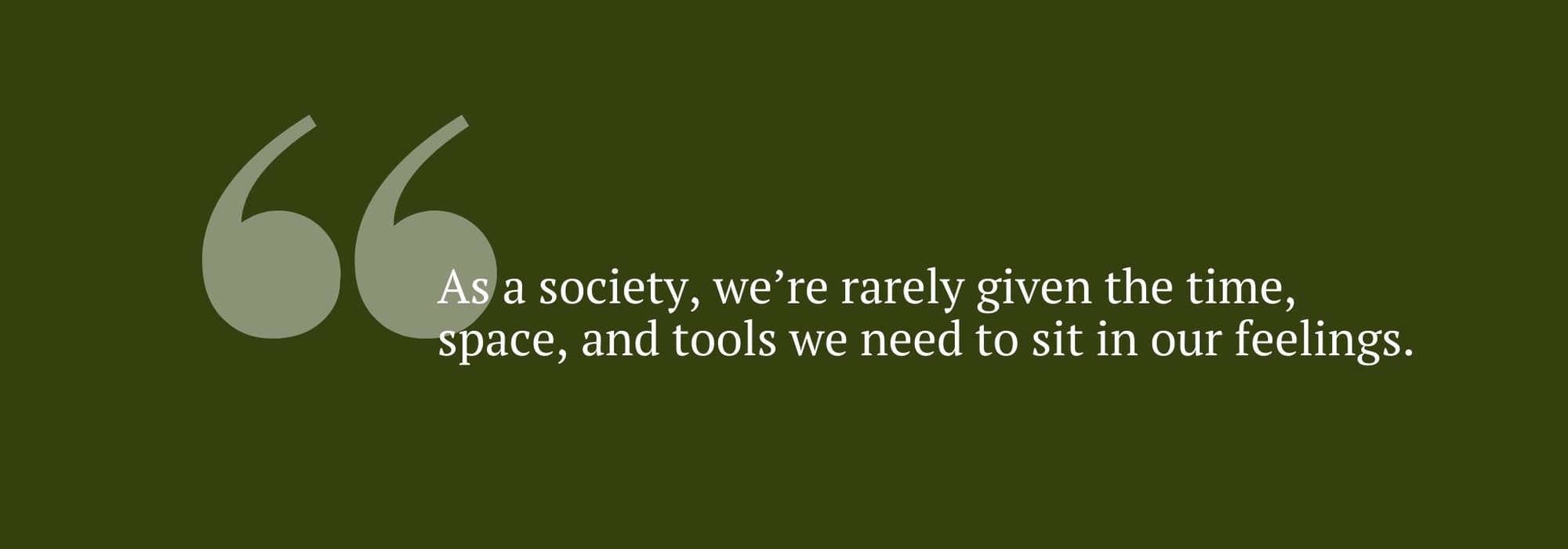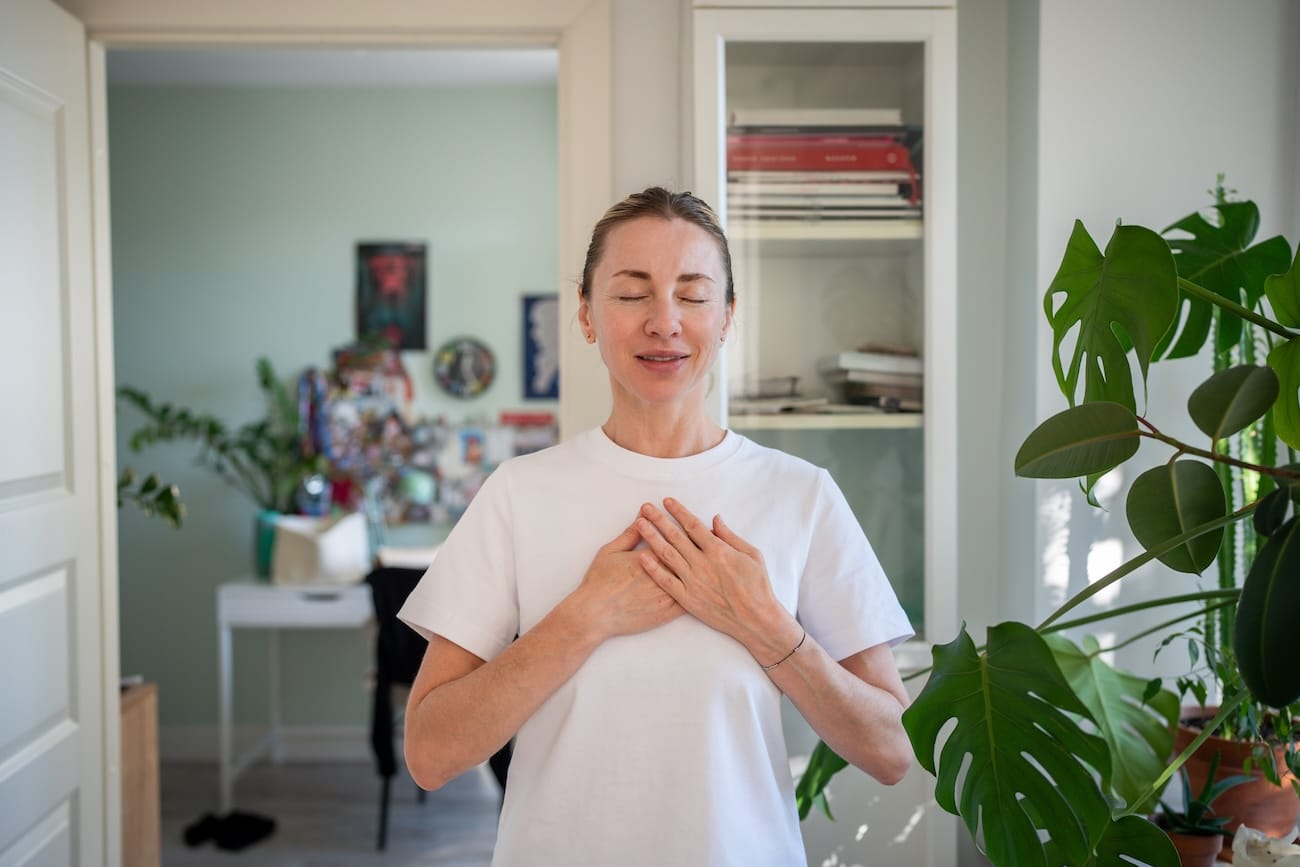Sadness is a natural part of life, so how can we learn to face up to it, without turning away?
Everyone gets sad sometimes, but how you react to it can be a fork in the road in terms of your overall wellbeing. It might seem easier to smile through the pain, or distract yourself with social media, opting for numbness instead. You might even pathologise your sadness, self-diagnose, and embark on a mammoth self-improvement plan to ‘fix’ what you believe is broken within you.
But, what if instead of trying to eliminate sadness, we could lean into it, and embrace the wisdom it has to offer?
The challenge of sadness
To truly feel sadness when it inevitably crops up, we require presence. This means getting familiar with the shape of sadness, acknowledging the way it impacts us, and how it moves through the body. Being present with all that can be scary – which is why so many of us instinctively avoid it. Our resistance to this discomfort isn’t a personal failing, but rather a symptom of a wider issue.
Capitalism functions best when workers are ‘productive’. This means that, whether you’re employed or not, you’re continually fed the message (via governmental bodies, employers, academic institutions, media, and even friends and family) that your value as a person is linked to productivity. Often, this means internalising this false belief, and hiding sadness away in order to stay safe.
“Such a focus on ‘getting things done’ can make it difficult to trust that the intentional moments of slowness needed to tune into our experiences can be a valuable part of our routines,” explains counsellor Hannah Cheriford. “This regular urgency creates a barrier to spending time with our bodies, and attending to emotions in a meaningful way.”
As a society, we’re rarely given the time, space, and tools we need to sit in our feelings. This means that when feelings with the potential to threaten our perceived value as a person start to bubble up, we tend to deny them, or pretend they don’t exist. For me, it looks like binge-watching true crime documentaries on Netflix – for you, it could be online shopping, daydreaming, or using drugs or alcohol.

With social media, we have a whole world of distractions accessible to us. But the digital age isn’t the only contributor to our avoidance of sadness. “British culture is known for demanding a stiff upper lip,” says Hannah. “This was once a protective belief, helping people navigate the emotional fallout of war and trauma at a time where little was known about how to support a person to tolerate and heal from such distress.
“Despite improvements in mental health stigma, echoes from our previous generations, long working weeks, and an increasing social media ‘rise and grind’ culture, mean that emotional wellbeing is not always at the forefront of our minds.
“The more we distract, avoid, or distance ourselves from our feelings, the harder it can be to get back to them,” stresses Hannah. Indeed, some of us have never been taught how to name, notice, and be with our sadness. The consequence? It might seem illogical, but avoiding sadness can lead to more suffering.
“For some people, [sadness] stores up over time until they notice that they might have emotional ‘eruptions’ that feel out of their control,” says Hannah. “For others, they may notice that long-term disconnection makes it hard for them to be fully present in their lives or relationships. After a long time, the body may compensate for what is not processed or expressed, leaving a person physically sick, ill, or exhausted.”
In short, avoiding feeling sad is a short-term strategy with long-term mental and physical implications, potentially having a greater impact than the original feeling had it been encouraged to pass through naturally.
Befriending sadness
Because of the systemic cultural bias towards ‘positive’ emotions, you might not even notice you’re sad. This doesn’t mean that you’re broken or permanently disconnected from your emotions; it just means that you need to rebuild your relationship with your inner self, and notice when things feel ‘off’.
One way to reconnect with your emotions can be to make a list of the things that are bothering you at the moment. Whether it’s a big project at work keeping you up at night, or a friendship that seems to be shifting in dynamics, starting with the external trigger can be a way into naming, feeling, and processing.
When you’ve compiled a list, pick one scenario and write down the feelings it stirs up. If you’re stuck, try looking at a feelings wheel to identify specific emotions. According to Hannah, this simple act of naming emotions is a permission slip to feel, which can reduce resistance and tension, as well as build emotional literacy.
Once you’ve noticed and named your emotion, try completing a ‘body scan’ to locate it in your body. “Imagine scanning yourself from head to toe, paying attention to any physical sensations that show up,” says Hannah. “Does your heart ache? Is your stomach in a knot? Continue to notice and name it.” Working with a trained counsellor, therapist, or somatic practitioner may offer support to help make this easier.

The aim here is to witness your sadness with compassion. “Try offering some connection to the place in your body that emotion is felt,” says Hannah. “Offer your hand to it, wrap yourself in a hug, or squeeze a beloved item. Allow yourself some comfort as you sit with the discomfort.”
Sometimes, this may be enough to allow the feeling to pass through. Other times, you may feel drawn to investigate the feeling a little further. “Emotions give us meaningful information,” explains Hannah. “Becoming curious can help us to decode this insight, and identify our underlying needs.
“Ask yourself: ‘What is this feeling trying to tell me?’” suggests Hannah. You may find that it is rooted in loneliness, which might prompt you to reach out to a friend. Or, you may uncover that sadness is a consequence of over-giving to others. This insight could encourage you to set boundaries and speak up for yourself. Sadness can offer a roadmap to feeling better.
The key is to intentionally make space for sadness – but you don’t have to wait until you’re overwhelmed to get started. In fact, checking in with yourself once a week allows you to start the practice of self-inquiry, without too much pressure.
This isn’t about forcing sadness if it’s not there, but rather, creating a container where these feelings know they’re welcome. Just like we schedule time for physical health check-ups, this emotional check-in prevents sadness from accumulating into something much harder to handle.


Comments